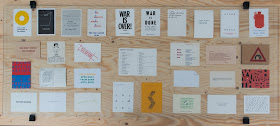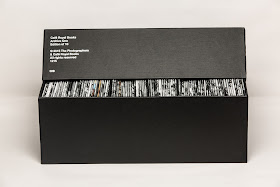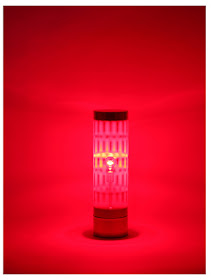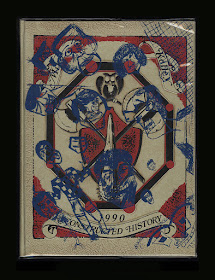Monday, February 29, 2016
Iggy Pop Poses Nude for Jeremy Deller
Last week 68-year old singer Iggy Pop posed nude for a life drawing class at the New York Academy of Arts. The students drawings of the Stooges frontman will be exhibited at the Brooklyn Museum in New York, as part of a project conceived by Jeremy Deller. The touring exhibition will be called Iggy Pop Life Class.
“The life class is a special place in which to scrutinize the human form,” Deller said of the project. “As the bedrock of art education and art history, it is still the best way to understand the body.”
Deller has often collaborated with musicians. For Acid Brass, he engaged brass bands from the north of England to play acid house anthems like A Guy Called Gerald’s Voodoo Ray. Our Hobby is Depeche Mode was made in collaboration with the band, about their fans. It was preceded by The Uses of Literacy, made in collaboration with fans of the Manic Street Preachers.
“For me it makes perfect sense for Iggy Pop to be the subject of a life class; his body is central to an understanding of rock music and its place within American culture,” Deller said in a press release. “His body has witnessed much and should be documented.”
The instance is not the first time Pop has posed nude.
Friday, February 26, 2016
Dick Higgins | Classic Plays
Dick Higgins
Classic Plays
New York City, USA: Unpublished Editions, 1977
[unpaginated], 23 x 15 cm., softcover
Edition of 750
Paul Sharits | Open the Door: An Incision
Paul Sharits
Open the Door: An Incision
Bloomington, USA: Indiana University, 1966
1 pp., 16.6 x 24 cm., accordion fold
Edition size unknown
Concertina book of blue crepe paper, letterpress printed.
Tuesday, February 23, 2016
Roman Signer | When you travel in Iceland you see a lot of water: a travel book
Roman Signer
When you travel in Iceland you see a lot of water: a travel book
Zürich, Switzerland: Scheidegger & Spiess, 2010
61 pp., 22 x 16 cm., hardcover
Edition size unknown
A travel book with a conversation between Signer and Tumi Magnússon.
Monday, February 22, 2016
Sunday, February 21, 2016
Wish You Were Here
A few new images (courtesy of photographer Jonathan Taphouse) of Wish You Were Here, an exhibition of artists' postcards from the collection of Jeremy Cooper at Hestercombe.
The traveling exhibition features over two hundred artists, including Carl Andre, Richard Long, Dieter Roth, Bruce Nauman, Joseph Beuys, Yoko Ono, Ben Vautier, Gilbert & George, Susan Hiller, Gavin Turk, Ruth Proctor, Aleksandra Mir, Rachel Whiteread, Julie Cockburn, Mark Wallinger, Robert Rauschenberg and Andy Warhol. There are eighty framed works and another two hundred displayed on tables designed by Michael Marriott.
The exhibition closes a week from today.
Visit the website, here, for details.
Saturday, February 20, 2016
Wolf Vostell | Technological Oak Tree
Wolf Vostell
310 Ideen T O T (Technological Oak Tree)
Hinwil, Switzerland: Galerie Howeg, 1972
9.5 x 13.5 x 8 cm.
Edition of 170 signed and numbered copies
Friday, February 19, 2016
Thursday, February 18, 2016
Wednesday, February 17, 2016
Art Metropole announces new Executive Director
Press release:
"Art Metropole is very pleased to announce the appointment of Danielle St-Amour as Executive Director. St-Amour will take up the post on February 22, 2016.
Danielle St-Amour brings to Art Metropole her talents as a writer and curator, a highly effective administrator and a gifted collaborator with a reputation for forward-thinking approaches to the exhibition and distribution of artist-initiated publications. St-Amour served as a member of Art Metropole’s Board of Directors from 2012-2015, during which time the organisation benefited immeasurably from her dedicated and innovative assistance with programming, fundraising, and event organising.
At a vital time of re-development for Art Metropole, Danielle's succession as Executive Director is key to ensuring continuity of leadership as the organisation embarks on a process of re-visioning. St-Amour’s intimate knowledge of and unflagging commitment to Art Metropole makes her a uniquely qualified and natural fit for the role of Executive Director.
St-Amour comes to Art Metropole from the Art Gallery of Ontario, where she was the Project Coordinator for the Aimia | AGO Photography Prize and the Artist in Residence Programs. She was previously at the Walter Phillips Gallery, Banff, and was the co-founder of the gallery and project space WWTWO, in Montreal. "I’m very excited and honoured to be taking on this new role with Art Metropole, an organization I have been involved with for nearly 4 years, and have admired deeply for many more. Alongside an incredible group of staff and board, I look forward to engaging with Art Metropole’s diverse creative community, and continuing to rethink the possibilities of print, distribution and artists’ publishing."
Danielle St-Amour is an artist, writer, and curator based in Toronto, who works predominately with collaborative projects and platforms. She currently co-edits the critical publication Rearviews with Xenia Benivolski, and recently guest-edited the Autumn 2015 issue of C Magazine, Poetry, alongside Kari Cwynar and cheyanne turions. She has worked as an editor and publications advisor with Kunstverein Toronto, and is a member of the editorial advisory board at C magazine. In 2013 she co-curated the exhibition TO BECOME WHOLE at The Banff Centre, with writer and art historian Robin Simpson. She was a participant in the Banff Research in Culture Institute, 2014, and joined the Critical Arts Writing Symposium at the Banff International Curatorial Institute in 2015. She regularly publishes writing and criticism, and works as a book designer for several galleries and artists."
"Art Metropole is very pleased to announce the appointment of Danielle St-Amour as Executive Director. St-Amour will take up the post on February 22, 2016.
Danielle St-Amour brings to Art Metropole her talents as a writer and curator, a highly effective administrator and a gifted collaborator with a reputation for forward-thinking approaches to the exhibition and distribution of artist-initiated publications. St-Amour served as a member of Art Metropole’s Board of Directors from 2012-2015, during which time the organisation benefited immeasurably from her dedicated and innovative assistance with programming, fundraising, and event organising.
At a vital time of re-development for Art Metropole, Danielle's succession as Executive Director is key to ensuring continuity of leadership as the organisation embarks on a process of re-visioning. St-Amour’s intimate knowledge of and unflagging commitment to Art Metropole makes her a uniquely qualified and natural fit for the role of Executive Director.
St-Amour comes to Art Metropole from the Art Gallery of Ontario, where she was the Project Coordinator for the Aimia | AGO Photography Prize and the Artist in Residence Programs. She was previously at the Walter Phillips Gallery, Banff, and was the co-founder of the gallery and project space WWTWO, in Montreal. "I’m very excited and honoured to be taking on this new role with Art Metropole, an organization I have been involved with for nearly 4 years, and have admired deeply for many more. Alongside an incredible group of staff and board, I look forward to engaging with Art Metropole’s diverse creative community, and continuing to rethink the possibilities of print, distribution and artists’ publishing."
Danielle St-Amour is an artist, writer, and curator based in Toronto, who works predominately with collaborative projects and platforms. She currently co-edits the critical publication Rearviews with Xenia Benivolski, and recently guest-edited the Autumn 2015 issue of C Magazine, Poetry, alongside Kari Cwynar and cheyanne turions. She has worked as an editor and publications advisor with Kunstverein Toronto, and is a member of the editorial advisory board at C magazine. In 2013 she co-curated the exhibition TO BECOME WHOLE at The Banff Centre, with writer and art historian Robin Simpson. She was a participant in the Banff Research in Culture Institute, 2014, and joined the Critical Arts Writing Symposium at the Banff International Curatorial Institute in 2015. She regularly publishes writing and criticism, and works as a book designer for several galleries and artists."
Tuesday, February 16, 2016
Maurizio Nannucci | Découvrir Différentes Directions
Maurizio Nannucci
Découvrir Différentes Directions
Pisa, Italy: Fondazione Teseco per l’Arte, 2002
49 × 32 × 13 cm.
offset paper bag
Edition of 3000
Available at Art Metropole, here, for $15.00 CDN.
Monday, February 15, 2016
Lee Henderson | Palliative Care (1985-1992)
Lee Henderson
Palliative Care (1985-1992)
Toronto, Canada: Zalucky Contemporary, 2016
SD DVD 25:00
Edition of 20
Yesterday Zalucky Contemporary premiered Lee Henderson's fantastic new Palliative Care (1985-1992), a video assemblage of every reference to death found in the sitcom The Golden Girls.
The NBC series was created by Susan Harris and starred Beatrice Arthur, Betty White, Rue McClanahan, and Estelle Getty, as four older women who shared a home in Miami, Florida. The show was both a commercial and critical success, and spawned three spin-offs and eight international remakes (Chile, Greece, The Netherlands, The Philippines, Russia, Spain, Turkey and the United Kingdom).
Henderson has divided his episode-length work into seven sections (for the series' seven seasons) and presents the clips chronologically, by original air date. In a Q&A after the screening, it was revealed that only five (of the 180) episodes were omitted from the work, for lack of a clear verbal reference to death.
The editing is quick and concise, with the rhythm dictated by the original scripts. The references are often mid-sentence and tightly trimmed, with rapid-fire pacing. When the word (death, dying, eulogy, heart attack, murder, die, etc.) falls at the end of the sentence, the canned laughter follows, serving as a strange form of punctuation.
Most of the dialogue takes place in the main set of the shared home - with it's soft pastel 1980's decor.
Other sets include a funeral home, a dinner theatre, and a hospital room. The character of Rose Nylund, portrayed by Betty White is often seen in a hospital bed, surrounded by her visiting friends. Of the four actresses, only White (now 94) remains. The others died within a year of each other at the end of the last decade.
Like many of his best works, Henderson's video offers a compelling (and often very funny) meditation on mortality. Beautifully packaged in a wooden box, the video is also accompanied by a bookwork/folding scroll of a list of each of the words or phrases heard in the video, in alphabetical order.
Sunday, February 14, 2016
Saturday, February 13, 2016
Café Royal Books | Archive One
Café Royal Books
Archive One
Southport, UK: Café Royal Books, 2015
42.3 x 21.4 x 21 cm.
Edition of 10
Café Royal Books is a small independent publisher of zines, primarily photo-based, that is ran out of Southport, England. The operation began in 2005, and at peak times has released a new publication every week. These 28-page booklets are typically produced in small runs, with most being published in an edition of 150 copies. They are sold online and through bookshops in the UK, Europe, USA, Australia, Japan, Canada and Switzerland.
Martin Parr has described the project as "a great archive of much forgotten documentary photography". The books predominantly document "social, historical and architectural change, using both new work and photographs from archives." Emphasis is given to work that "encourages new ways of thinking about existing material or language which demonstrates the importance of using, documenting, collecting and observing a particular process or thing."
Archive One was published in December of last year, on the tenth anniversary of imprint. The elegantly designed box includes the first 100 books of the current series, featuring works by Homer Sykes, David Levenson, John Claridge, Joni Sternbach, David Carol, Matthew Birchall, Geoff Howard, Patrick Ward, Marc Valée, Brian David Stevens and Craig Atkinson, who founded Café Royal.
It's available from the publisher, here, for £750.
Friday, February 12, 2016
Thursday, February 11, 2016
Brion Gysin | Dream Machine
Brion Gysin
Dream Machine
Dreammachine.ca, 2012
18cm x 18cm x 66cm
Edition of 500
The "first artwork designed to be seen with your eyes closed" was conceived on a bus ride
by Brion Gysin in 1958.
"[I] had a transcendental storm of colour visions today in the bus going to Marseilles," wrote the artist/author, in a diary entry from December 21st, 1958. "We ran through a long avenue of trees and I closed my eyes against the setting sun. An overwhelming flood of intensely bright colors exploded behind my eyelids: a multidimensional kaleidoscope whirling out through space. I was swept out of time. I was out in a world of infinite number. The vision stopped abruptly as we left the trees. Was that a vision? What happened to me?"
Gysin was born in England to Canadian parents and grew up in Edmonton, Alberta. He is best known for his "discovery" of the cut-up method of writing popularized by his close friend William S. Burroughs, who employed the technique in books such as Naked Lunch and Interzone. The Beat author once remarked "Brion Gysin was the only man I ever respected."
When Gysin wrote him about his unusual experience, Burroughs replied "We must storm the citadels of enlightenment, the means are at hand". He also sent Gysin a copy of the The Living Brain by Dr. W. Grey Walter, a neurophysiologist, which described the effect of flickering light on the brain. A shared friend, Ian Sommerville, had also read the book and wrote to Gysin in 1959 announcing that he had produced a protoype of the machine based on Gysin's descriptions:
"I have made a simple flicker machine. You look at it with your eyes shut and the flicker plays over your eyelids. Visions start with a kaleidoscope of colors on a plane in front of the eyes and gradually become more complex and beautiful, breaking like surf on a shore until whole patterns of color are pounding to get in. After awhile the visions were permanently behind my eyelids and I was in the middle of the whole scene with limitless patterns being generated around me. There was an almost unbearable feeling of spatial movement for a while but It was well worth getting through for I found that when it stopped I was high above the earth in a universal blaze of glory. Afterwards I found that my perception of the world around me had increased very notably. All conceptions of being dragged or tired had dropped away..."
From Sommerville's description, Gysin built the Dreamachine in early 1960 in the Beat Hotel in Paris, and obtained a patent the following year.
The Dreamachine consists of a lightbulb inside a cylinder on a 78 RPM turntable. Subjects face the cylinder with their eyes closed and light flickers on the eyelids at a frequency of about 20 Hz, stimulating the optic nerve and altering the brain's electrical oscillations. Users are said to experience increasingly bright, complex patterns of colour behind their closed eyelids.
Aldous Huxley remarked: “The Dreamachine is an aid to visionary experience.” According to Dreammachine.ca, who has produced this new version in an edition of 500 copies, other proponents of the device include David Bowie, Paul McCartney, Kurt Cobain, Laurie Anderson, Steve Lacy, Keith Haring, Allen Ginsberg, Iggy Pop, Bruce Labruce, Marianne Faithfull, Kenneth Anger, Beck and Floria Sigismondi. The site features testimonials by John Giorno, Dj Spooky, Genesis P-Orridge and many others.
Wednesday, February 10, 2016
Richard Prince | Loud Song
Richard Prince
Loud Song
New York City, USA: 303inprint, 2016
12" LP
Edition of 250 signed copies
"Loud Song was recorded in Venice Beach California in a house that I rented in the winter of 1985.
I recorded the song on an electric keyboard.
I used two cassette tape recorders.
I Would play the keyboard and record what was played on the first cassette.
Then I would play what I recorded and play more keyboard and record both sounds on the second cassette.
Then I would play back what I recorded on the second cassette and play more keyboard and record all that onto the first cassette.
It was like I was using the cassette players as musicians.
I would record this way until the song got really loud.
At the time I was under contract with Warner Bros.
My job was to try to write “hit” songs. At least that’s what I thought my job was.
Nothing I wrote for this job ever appeared on a record."
"Loud Song was self-recorded in 1985 in Venice California. My band at the time, “Him,” played once in 1980 at Jenny Holzer’s loft at one of her “band parties.” By the time I had recorded “Loud Song” in 1985 I had reduced the members of Him to one. By 1986 I reduced the only remaining member to no one."
- Richard Prince
Previously released (in 2013) as a CD single, Gallery 303 will be launching a new special limited edition vinyl version of Prince's 1985 sound work at the LA Art Book Fair later this week.
In 2004 Prince designed the cover for Sonic Youth's LP Sonic Nurse. Here, Kim Gordon returns the favour, designing a new cover for the 2016 release. The original graphic (below) now appears in the LP as a fold-out poster.
Tuesday, February 9, 2016
Katie Paterson | Lightbulb to Simulate Moonlight
Katie Paterson
Lightbulb to Simulate Moonlight
London, UK: Bookworks, 2008
25 x 16 x 11 cm.
Edition of 10
Katie Paterson’s research-based projects often see her collaborating with specialists from the fields of astronomy, astrophysics, genetics, and nanotechnology. For the installation work Lightbulb to Simulate Moon Light, Paterson worked with engineers to determine the spectral measurements of moonlight. They took light-meter readings, analyzed wavelengths, and found an appropriate surface coating in order to produce a bulb that emits rays approximating the light of a full moon.
Paterson commissioned OSRAM Licht AG, a multi-national lighting manufacturer based in Munich, to manufacture the 28 W bulbs with a lifespan of 2,000 hours. The work is exhibited and sold as a wooden crate containing 289 bulbs, which corresponds to the average human life expectancy of 66 years (based on 2008 estimates). Each time the work (produced in an edition of nine copies) is exhibited - with a single bulb burning in the gallery - the lifespan of the artwork is shortened.
This version from Bookworks contains two of the bulbs in a cloth-covered, letter-pressed box.
Monday, February 8, 2016
This week on Tumblr: Giorno Poetry Systems
This summary is not available. Please
click here to view the post.
Sunday, February 7, 2016
Mike Kelley | Reconstructed History
Mike Kelley
Reconstructed History
Cologne, Germany: Galerie Gisela Capitain, 1990
136 pp., 32 x 24 cm., hardcover
Edition of 250 signed and numbered copies
Designed to resemble an embossed high school yearbook (with a removable mylar dust jacket containing adolescent doodles), Reconstructed History presents a series of iconic American photographs, defaced with crude drawings and marginalia.
The collection of heroic idealized images of a shared American heritage are culled from scholastic textbooks, all altered with puerile scrawlings, mostly sexual and scatological.
"Here we have a collection of grotesqueries, defacements of some of the most cherished images of our American past," Kelley writes in the introduction, on faux parchment paper, emulating a colonial design. "Who could be responsible for such defilements? What could be the purpose of tarnishing the heroic figures and events we hold so dear?"
Historical figures are seen sporting elongated noses and erections. The Statue of Liberty appears twice: first with added breasts, pubic hair and 'stink lines' emanating from the armpit of her raised torch arm, and later as a phallus with the addition of crudely drawn testicles and ejaculate. The Washington Monument and Empire State Building suffer similar fates.
A gold rush prospector defecates in a stream while panning for gold. The Declaration of Independence is covered in vomit. Speech bubbles convey sentiments such as "Your horse is hung heavier", "Sniff my finger" and "Eat Shit Dad".
Kelley notes that this is not the work of "candidates for a revolutionary youth army or satanic murder cult", but rather grade school students. But - in addition to some recurring motifs - the handwriting appears remarkably consistent throughout.
Unlike the bawdy cartoons, Kelley’s essay employs the jargon and tone of psychoanalysis. He asserts that the lewd doodles go beyond schoolyard mischief:
“Childish resentment is the cause of the defacements presented here. The inability to accept their lower position in the order of things provokes these ‘artists’ to drag back to the surface garbage long buried–to sully, vandalize, and render inoperable our pictures of health. Not that such a tactic is always bad.”
Saturday, February 6, 2016
Bill Burns | Hans Ulrich Obrist Hear Us
Bill Burns
Hans Ulrich Obrist Hear Us
London, UK/Toronto, Canada: Blackdog Publishing/YYZ Books, 2015
224 pp., 23.4 x 16 x 3 cm., hardcover
Edition size unknown
Hans-Ulrich Obrist Hear Us features an episodic and humorous autobiography, illustrations of the artist's work, and texts by Dannys Montes de Oca Moreda, Dan Adler and Jennifer Allen.
For more information on Burns, visit here.
Friday, February 5, 2016
Sol Lewitt | Table
Sol Lewitt
Table
Chicago, USA: The Renaissance Society, 1998
113.75" x 46.25" x 29.75"
Edition of 10
A steel dining table with a glass top, available from the publisher, here, for $40,000.00.

















































